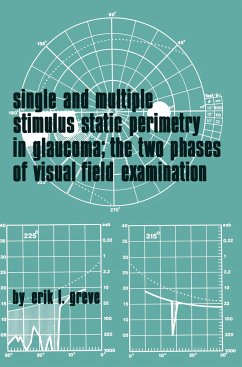
Biological Effects of Static Magnetic Fields
Versandkostenfrei!
Versandfertig in 6-10 Tagen
113,99 €
inkl. MwSt.

PAYBACK Punkte
57 °P sammeln!
The book summarizes the emerging topic about the effects of SMF on biological samples ranging from single molecules, subcellular compartments, and cells to whole organisms. It also discusses the potential application of SMF in clinical treatment of cancer, pain, diabetes and other diseases.With the development and growing popularity of modern appliances like MRI in hospitals, the potential impact of magnetic fields on human health is invoking increasing concerns. At the same time, SMF has been explored in the treatment of tumor and other diseases for decades. Nevertheless, there are still some...
The book summarizes the emerging topic about the effects of SMF on biological samples ranging from single molecules, subcellular compartments, and cells to whole organisms. It also discusses the potential application of SMF in clinical treatment of cancer, pain, diabetes and other diseases.
With the development and growing popularity of modern appliances like MRI in hospitals, the potential impact of magnetic fields on human health is invoking increasing concerns. At the same time, SMF has been explored in the treatment of tumor and other diseases for decades. Nevertheless, there are still some reservations and uncertainties about these treatments, which are largely due to the differential biological effects reported in the literature. These experimental inconsistencies are mainly caused by variations such as different magnetic field types, intensities, treatment time, as well as biological samples examined.
The second edition added eight new chapters about newprogressin this field including impacts of SMFs, magnetism of biomolecules, and potential of SMFs in the management of bone, pain, diabetes, and immune systems. This volume will help clarify some dilemmas in this field and encourage further investigations in order to achieve a better understanding of the biological effects of SMF, aiming for a rational application of SMF in clinical therapy in the near future. The book is useful for scientists, doctors, and students who are interested in magnetic fields and life sciences
With the development and growing popularity of modern appliances like MRI in hospitals, the potential impact of magnetic fields on human health is invoking increasing concerns. At the same time, SMF has been explored in the treatment of tumor and other diseases for decades. Nevertheless, there are still some reservations and uncertainties about these treatments, which are largely due to the differential biological effects reported in the literature. These experimental inconsistencies are mainly caused by variations such as different magnetic field types, intensities, treatment time, as well as biological samples examined.
The second edition added eight new chapters about newprogressin this field including impacts of SMFs, magnetism of biomolecules, and potential of SMFs in the management of bone, pain, diabetes, and immune systems. This volume will help clarify some dilemmas in this field and encourage further investigations in order to achieve a better understanding of the biological effects of SMF, aiming for a rational application of SMF in clinical therapy in the near future. The book is useful for scientists, doctors, and students who are interested in magnetic fields and life sciences












